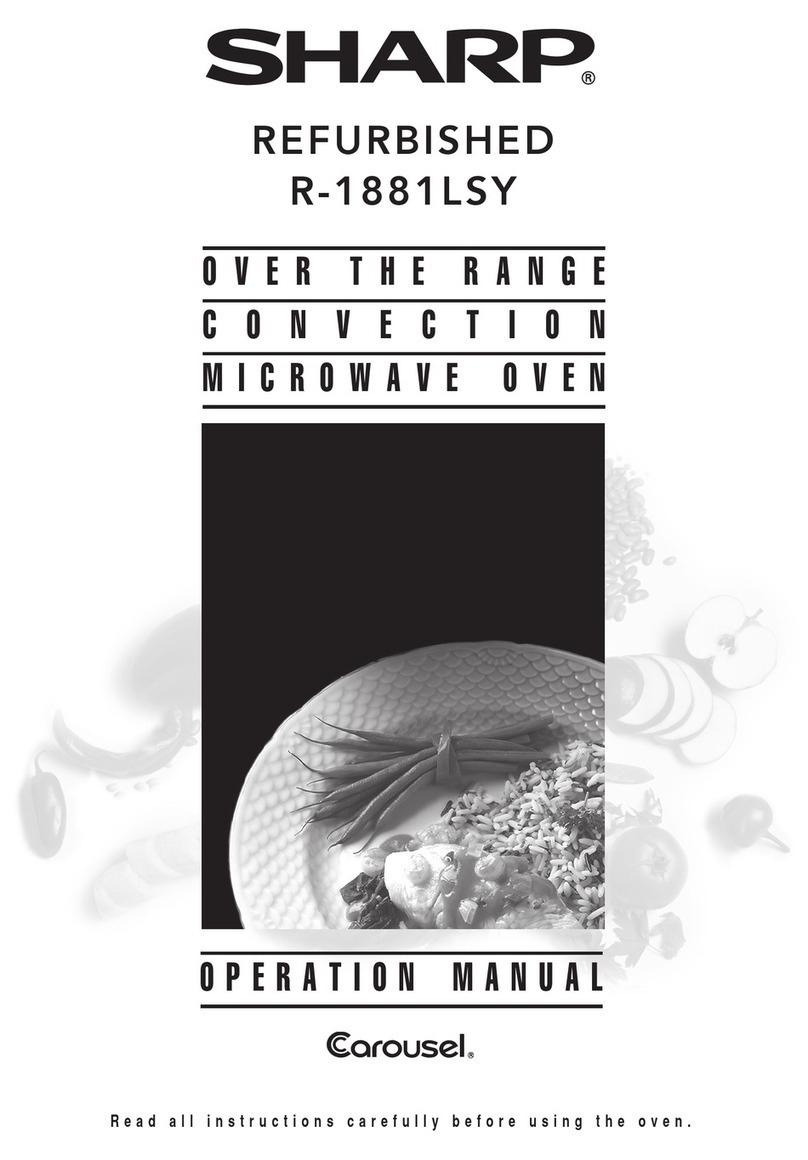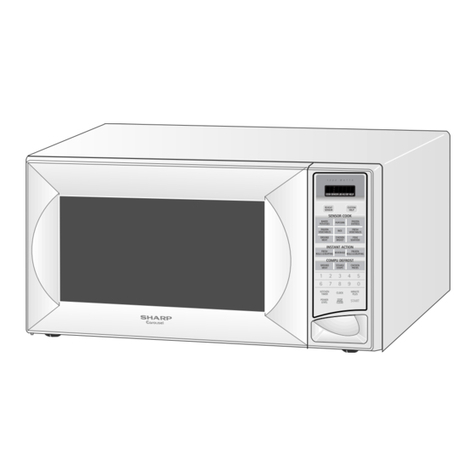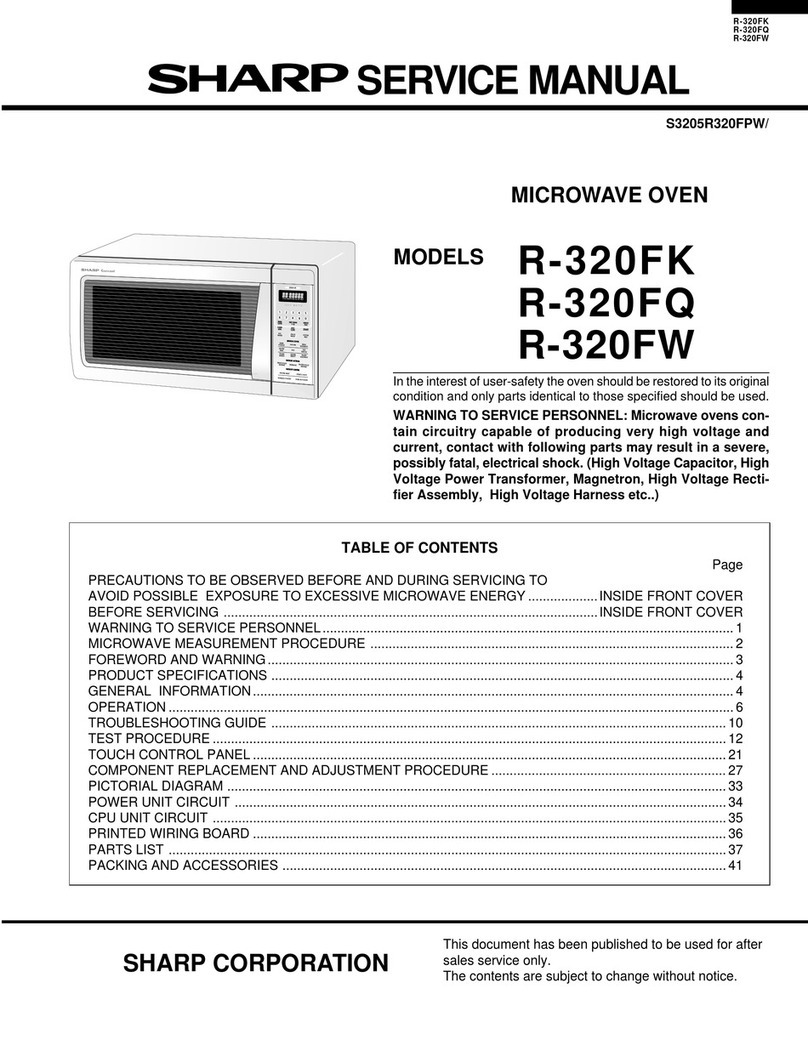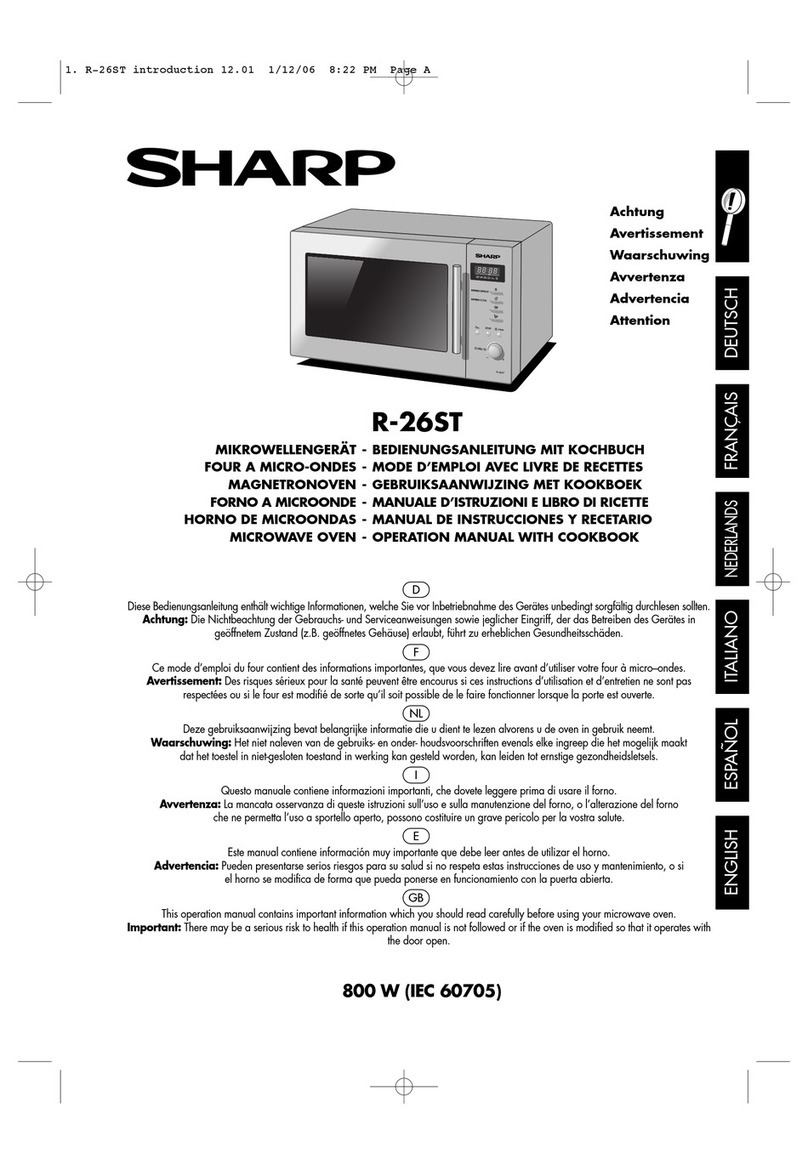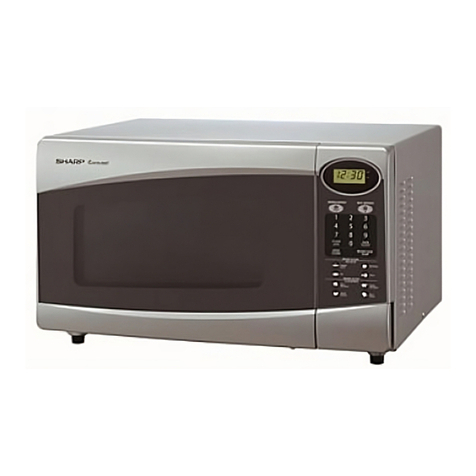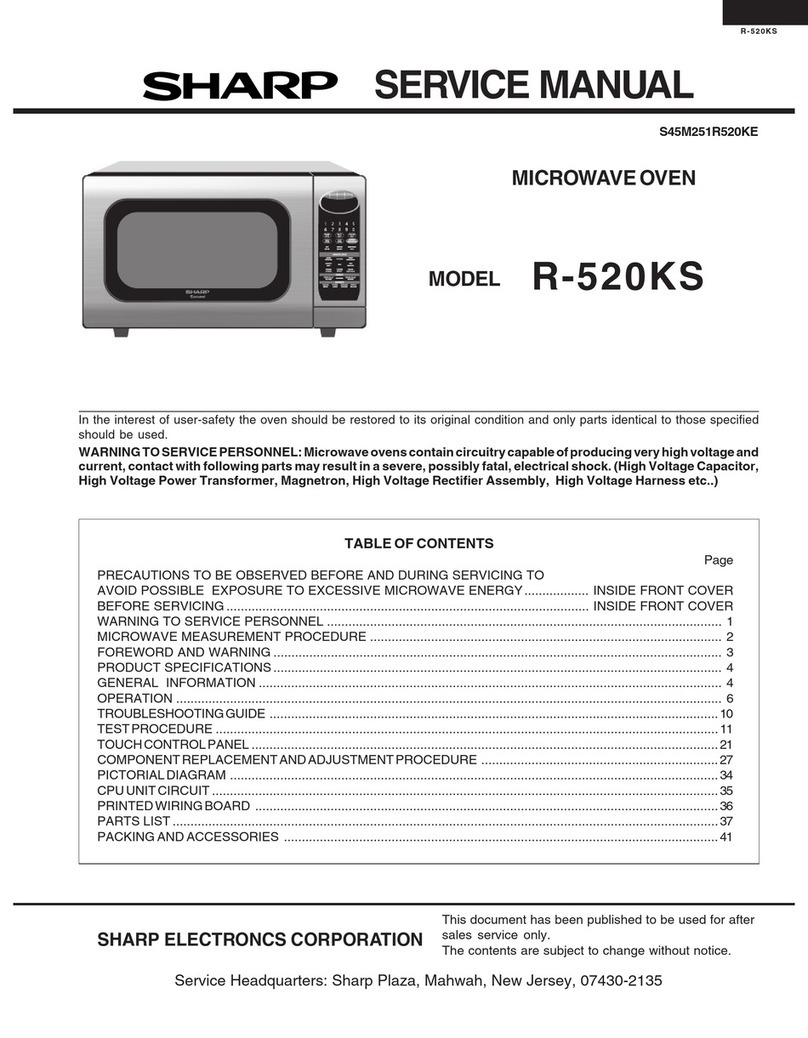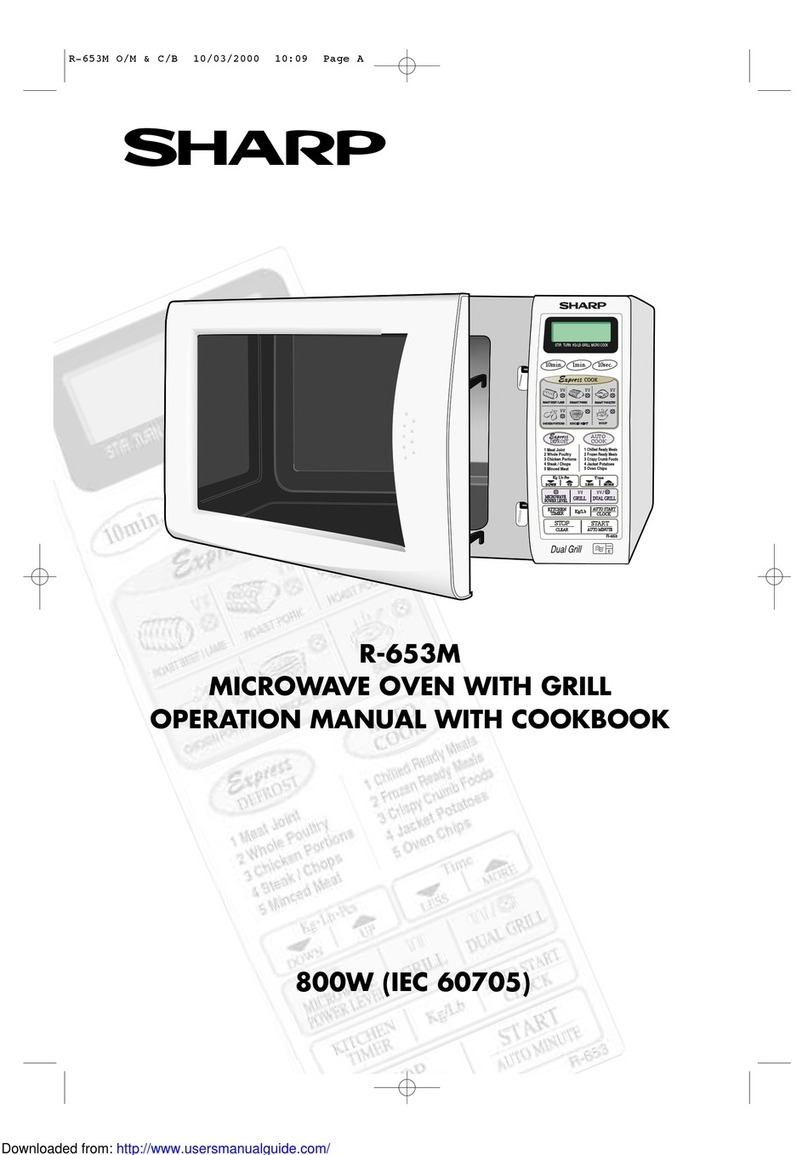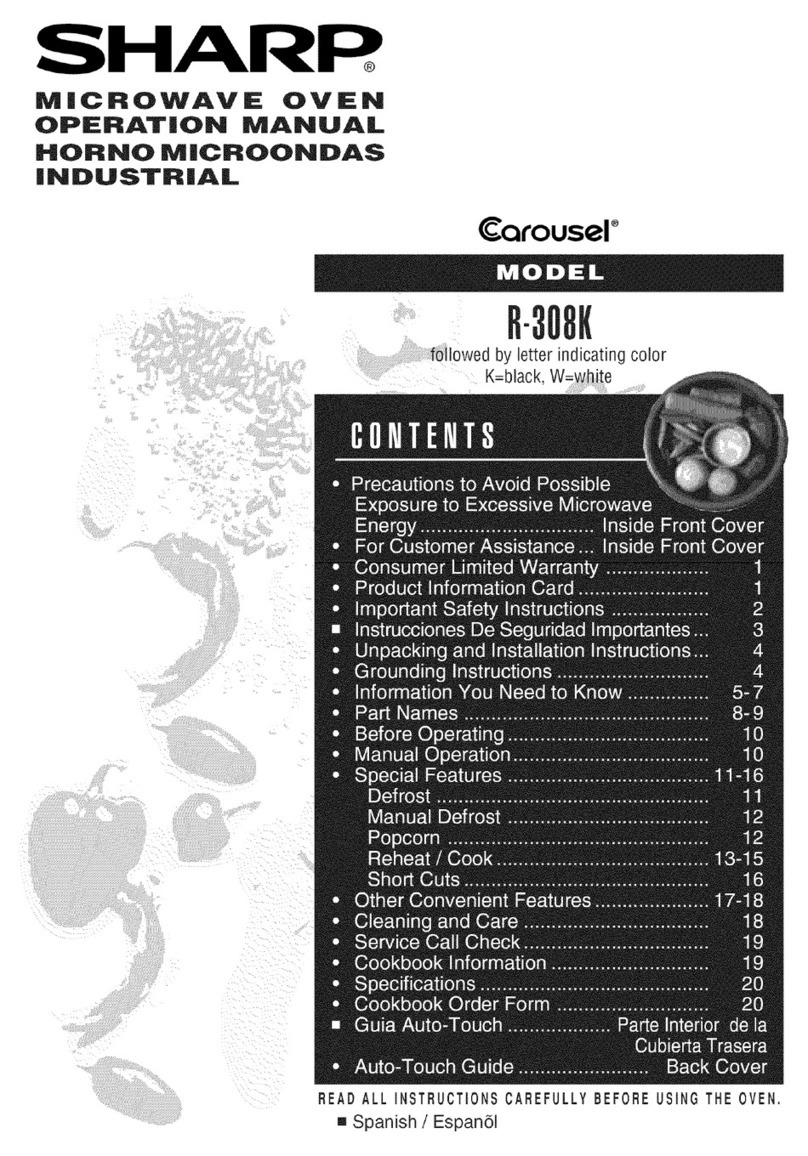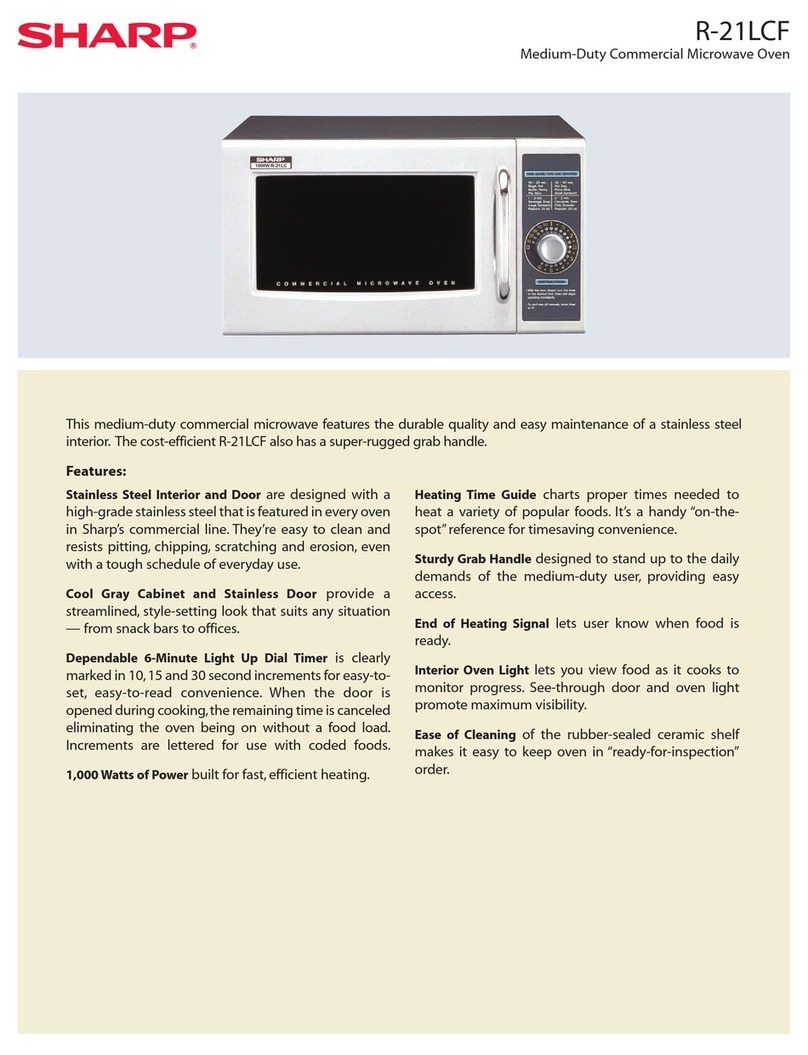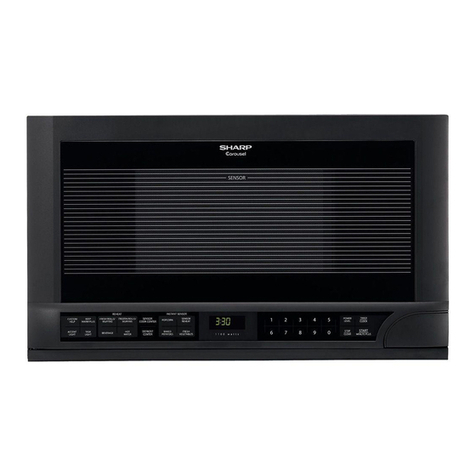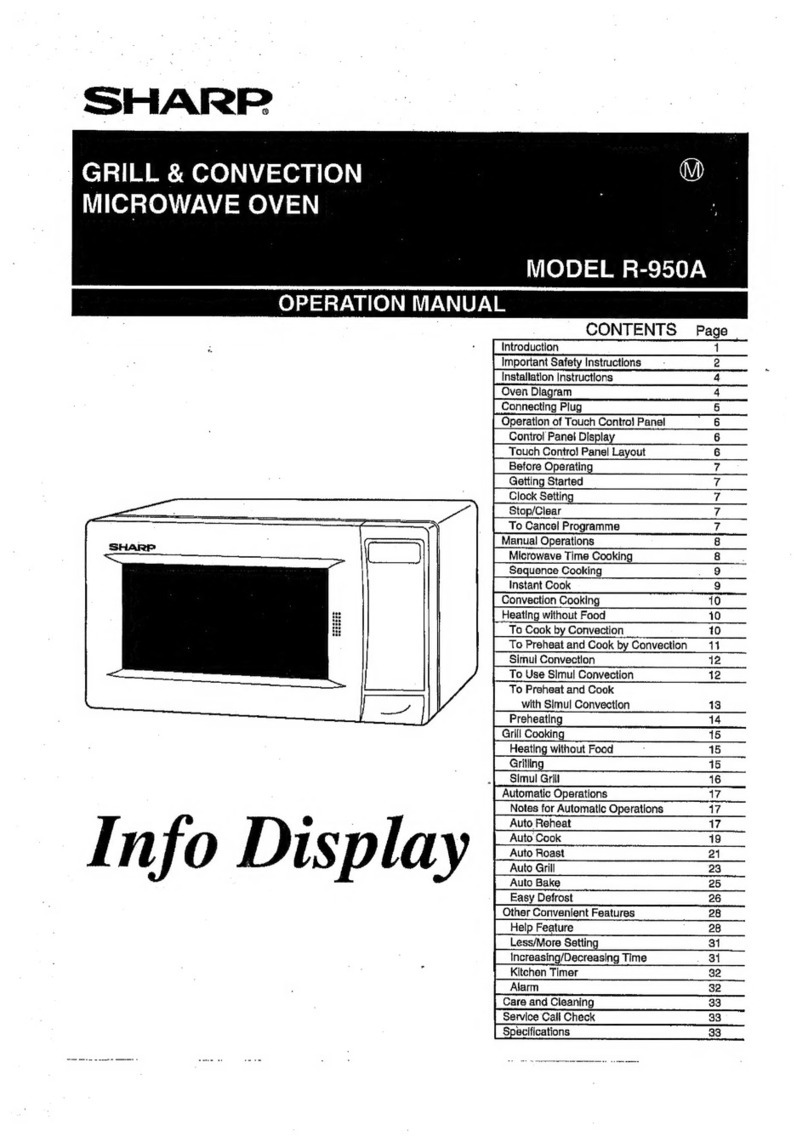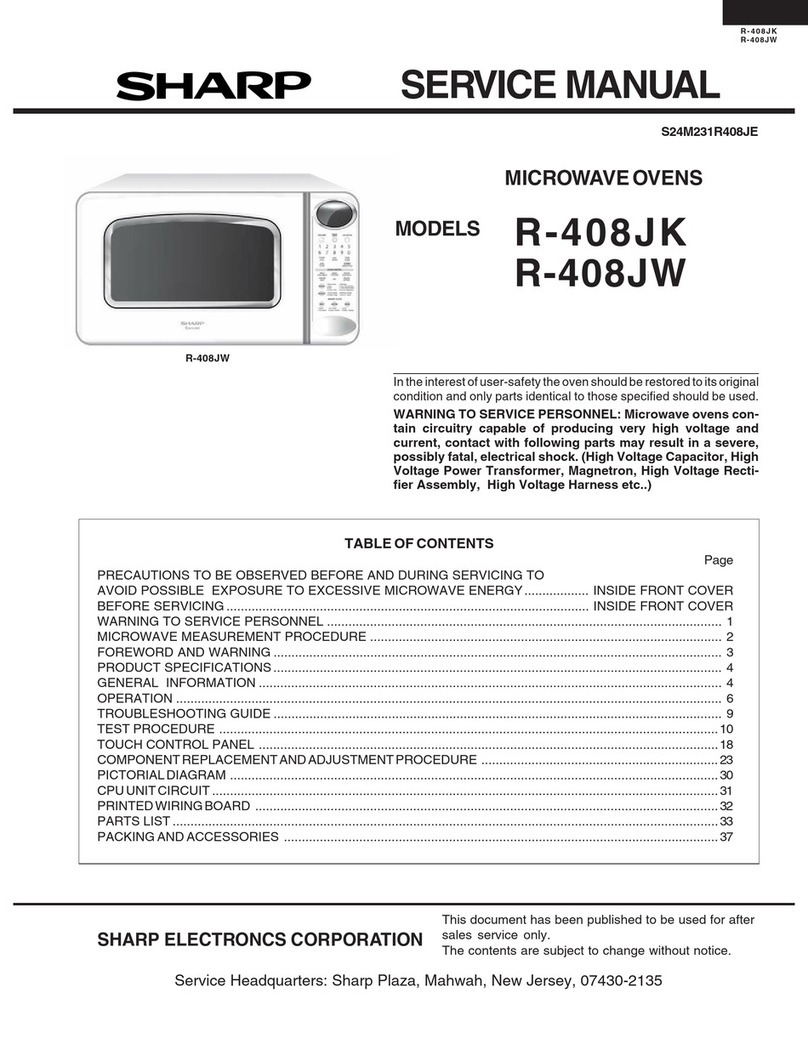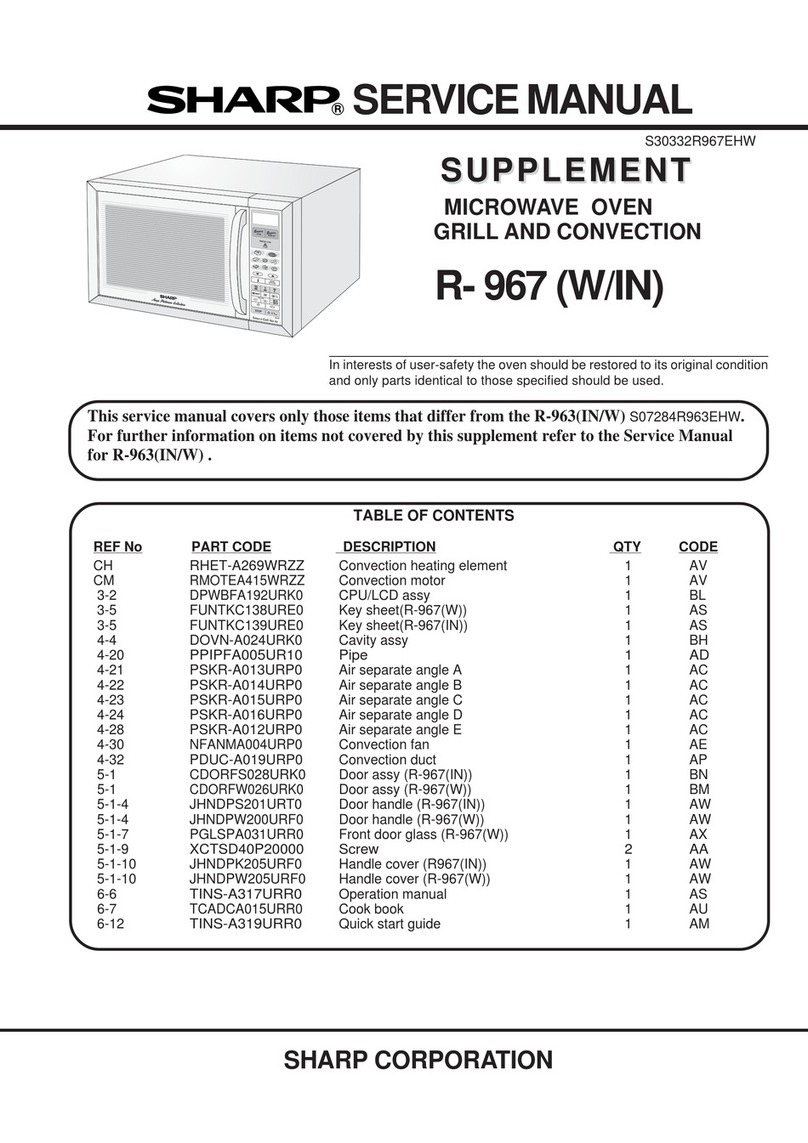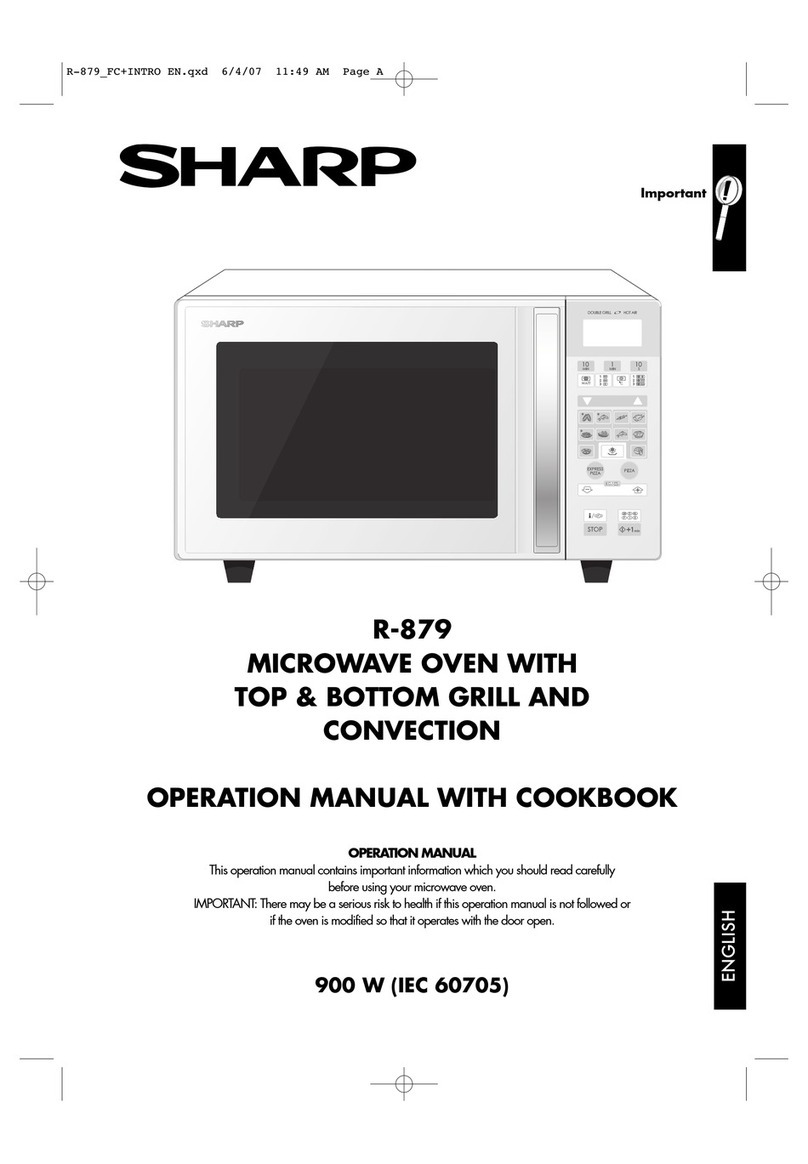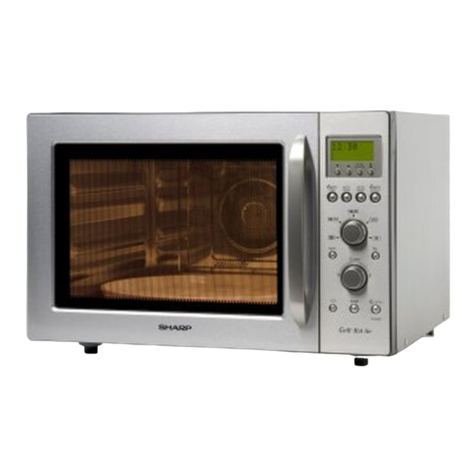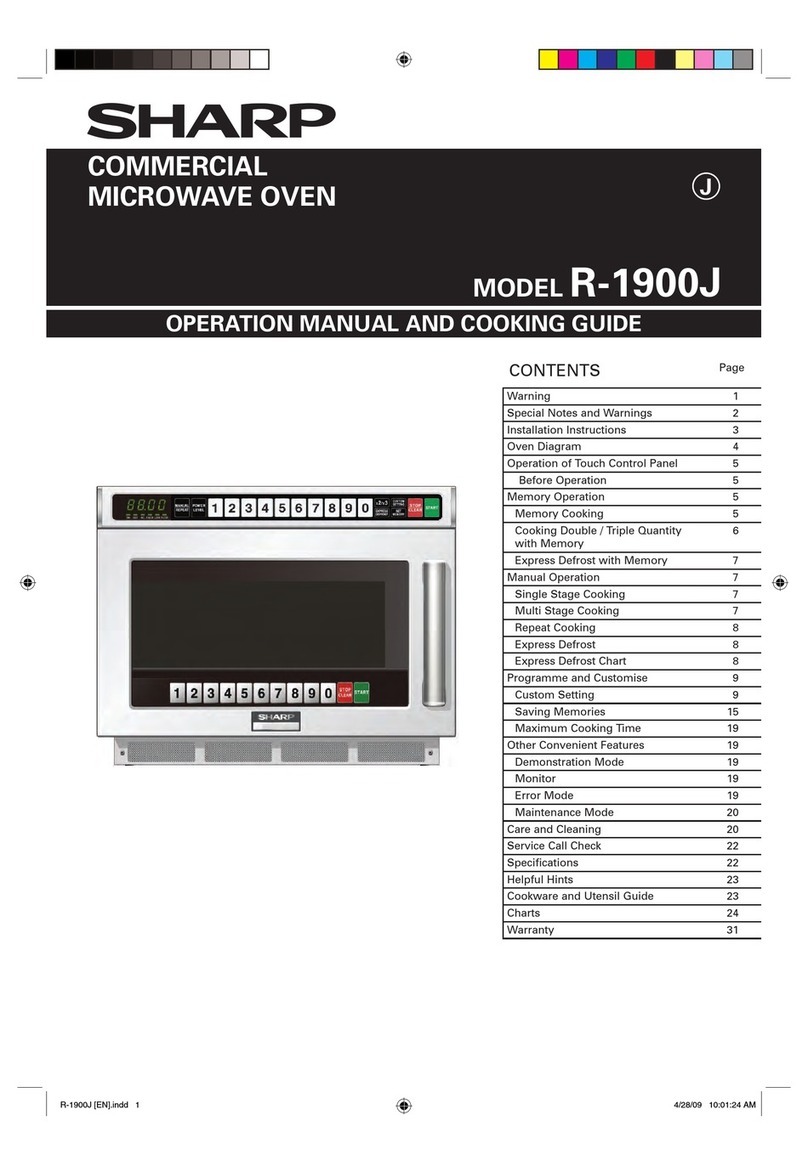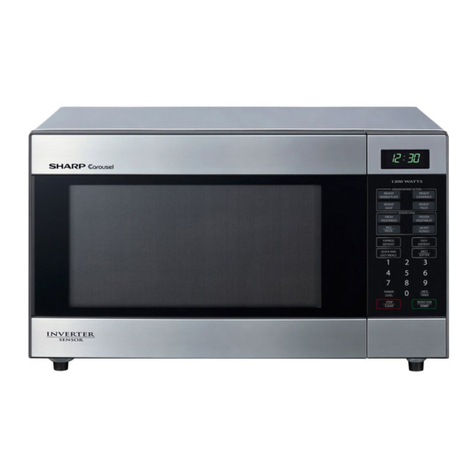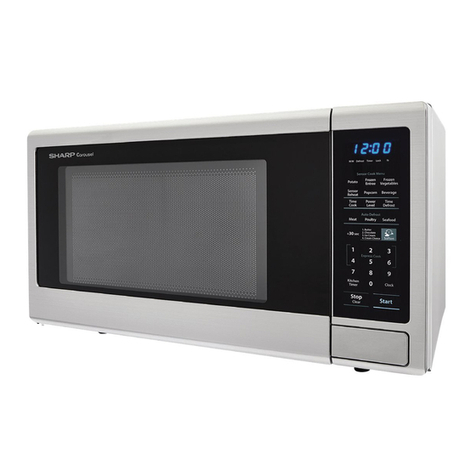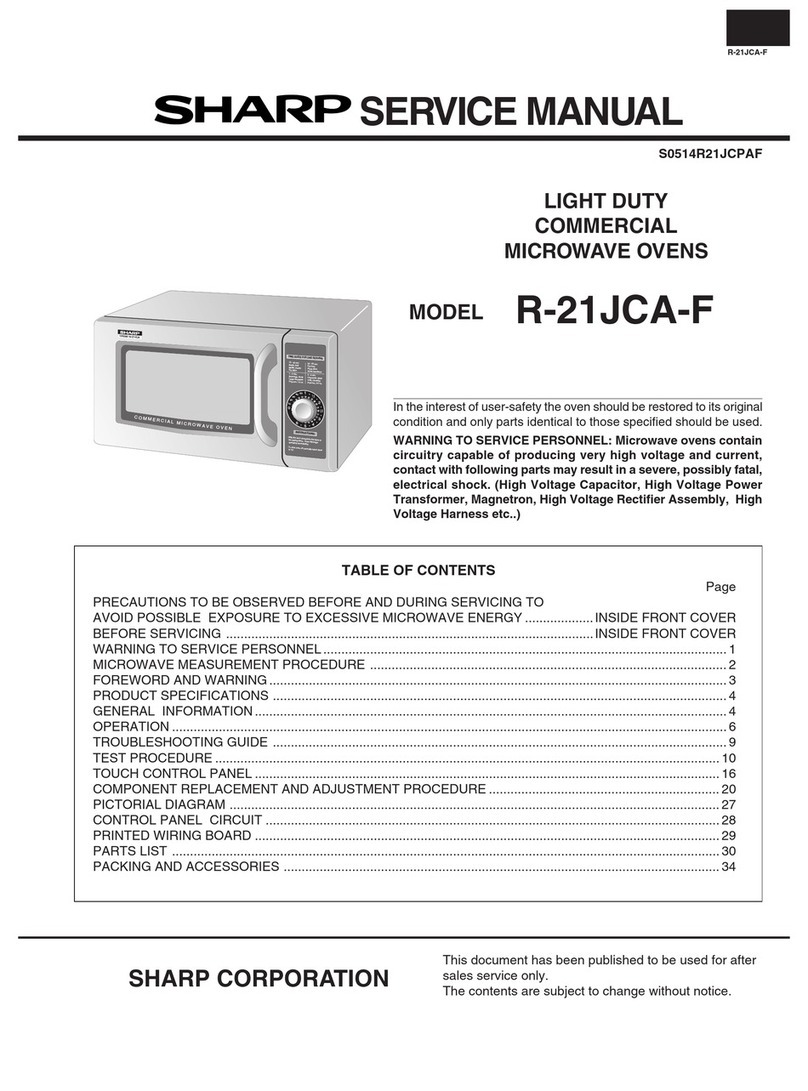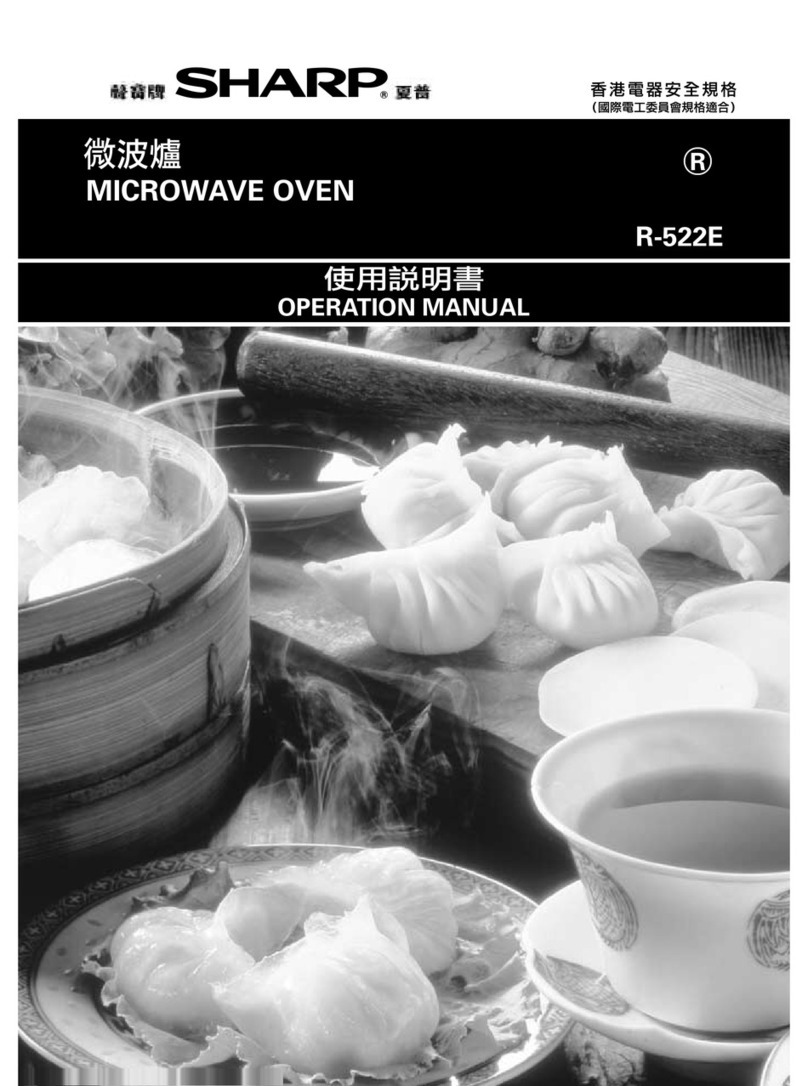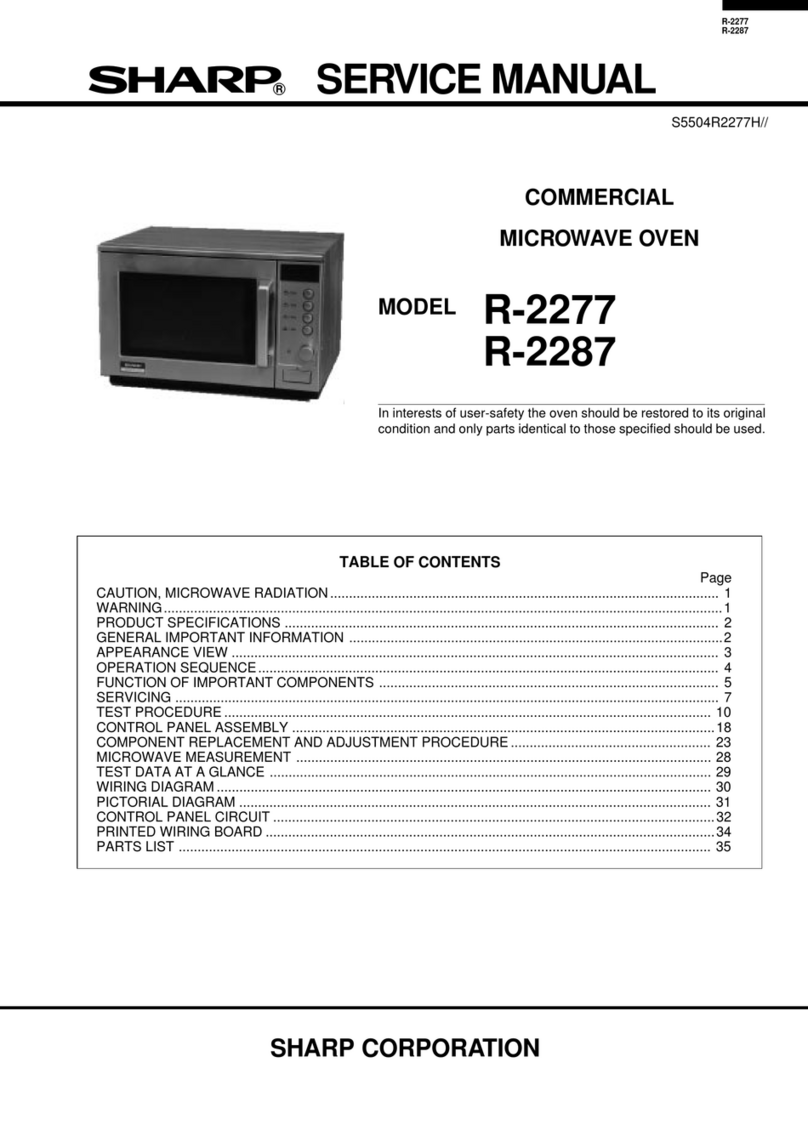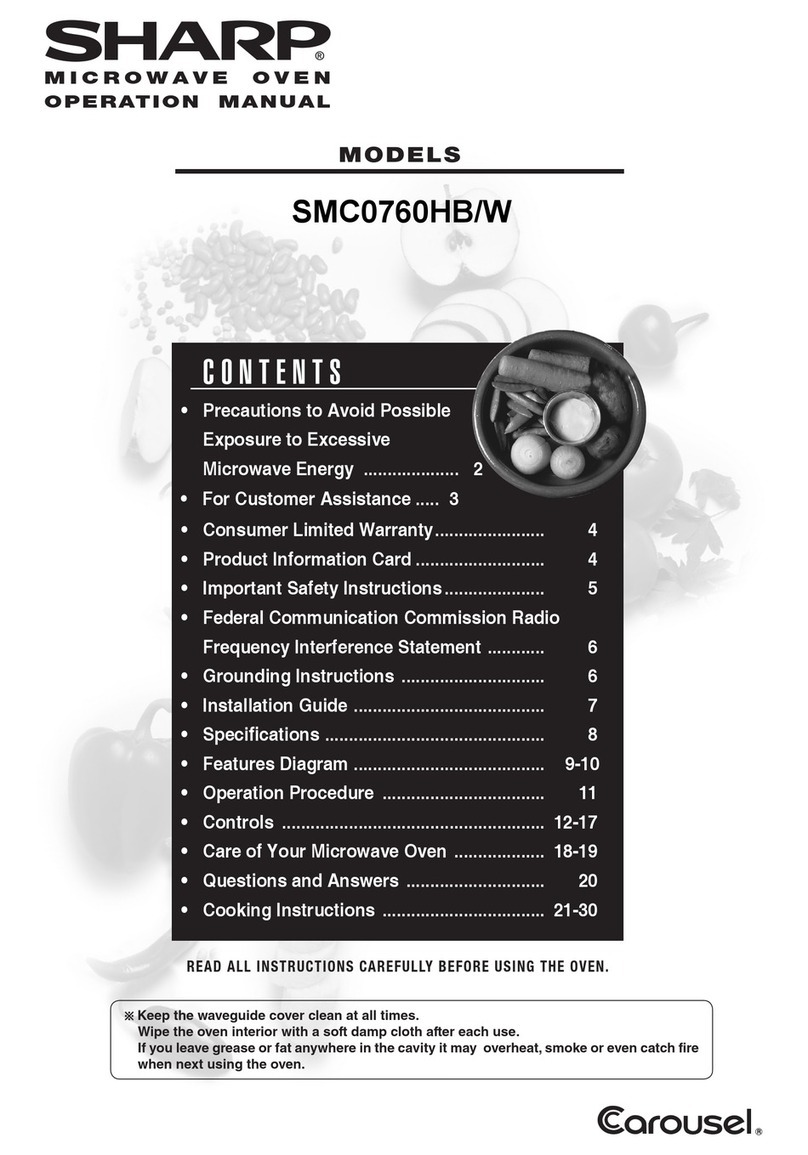
R-231NW
CHAPTER 6. OPERATION
[1] DESCRIPTION OF OPERATING SEQUENCE
The following is a description of component functions during
oven operation.
1. OFF CONDITION
Closing the door activates door sensing switch and secondary
interlock switch. (In this condition, the monitor switch contacts
are opened.)
When oven is plugged in, 120 volts A.C. is supplied to the
control unit. through the noise filter (Figure O-1).
1) The display will show flashing “88:88”.
2)
To set any program or set the clock, touch the STOP/CLEAR pad.
The display will clear, and “ : “ will appear.
2. COOKING CONDITION
Program desired cooking time by touching the NUMBER pads.
And program the power level by touching the POWER LEVEL pad.
When the START pad is touched, the following operations occur:
1) The contacts of the relays are closed and components con-
nected to the relays are turned on as follows.
(For details, refer to Figure O-2)
6 - 1
RELAY CONNECTED COMPONENTS
RY-1 oven lamp/turntable motor/fan motor
RY-2 power transformer
2) 120 volts A.C. is supplied to the primary winding of the power
transformer and is converted to about 3.35 volts A.C. output
on the filament winding, and approximately 2000 volts A.C.
on the high voltage winding.
3)
The filament winding voltage heats the magnetron filament and
the H.V. winding voltage is sent to a voltage doubler circuit.
4) The microwave energy produced by the magnetron is chan-
nelled through the waveguide into the cavity feed-box, and
then into the cavity where the food is placed to be cooked.
5) Upon completion of the cooking time, the power transformer,
oven lamp, etc. are turned off, and the generation of micro-
wave energy is stopped. The oven will revert to the OFF con-
dition.
6) When the door is opened during a cook cycle, monitor switch,
door sensing switch, secondary interlock switch and primary
interlock relay are activated with the following results. The
circuits to the oven lamp, turntable motor, the cooling fan
motor, and the high voltage components are de-energized,
and the digital read-out displays the time still remaining in the
cook cycle when the door was opened.
7) The monitor switch is electrically monitoring the operation of
the secondary interlock switch and primary interlock relay
(RY2) and is mechanically associated with the door so that it
will function in the following sequence.
a) When the door opens from the closed position, the sec-
ondary interlock switch, door sensing switch and primary
interlock relay (RY2) open their contacts. Then the moni-
tor switch contacts close.
b) When the door is closed from the open position, the
monitor switch contacts open first. Then the contacts
of the secondary interlock switch and door sensing switch
close.
If the secondary interlock switch and primary interlock relay
(RY2) fail with the contacts closed when the door is opened, the
closing of the monitor switch contacts will form a short circuit
through the monitor fuse, primary interlock relay (RY2) and sec-
ondary interlock switch, causing the monitor fuse to blow.
3. POWER LEVEL COOKING
When Variable Cooking Power is programmed, the 120 volts
A.C. is supplied to the power transformer intermittently through
the contacts of relay (RY-2) which is operated by the control unit
within a 32 second time base. Microwave power operation is as
follows:
VARI-MODE ON TIME OFF TIME
P-HI (100% power) 32 sec. 0 sec.
P-90 (approx. 90% power) 30 sec. 2 sec.
P-80 (approx. 80% power) 26 sec. 6 sec.
P-70 (approx. 70% power) 24 sec. 8 sec.
P-60 (approx. 60% power) 22 sec. 10 sec.
P-50 (approx. 50% power) 18 sec. 14 sec.
P-40 (approx. 40% power) 16 sec. 16 sec.
P-30 (approx. 30% power) 12 sec. 20 sec.
P-20 (approx. 20% power) 8 sec. 24 sec.
P-10 (approx. 10% power) 6 sec. 26 sec.
P-0 (0% power) 0 sec. 32 sec.
NOTE: The ON/OFF time ratio does not correspond with
the percentage of microwave power, because
approx. 3 seconds are needed for heating of the
magnetron filament.
4. POWER OUTPUT REDUCTION
If the oven is set for more than 20 minutes at 80, 90 or 100%
power level, after the first 20 minutes the power level will auto-
matically adjust itself to 70% power to avoid overcooking.
Service_R-231NW.indd 10Service_R-231NW.indd 10 6/24/09 3:56:42 PM6/24/09 3:56:42 PM
